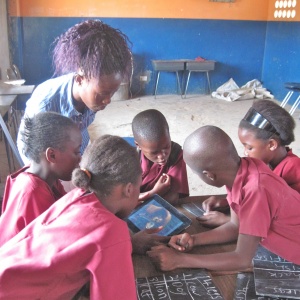OER4Schools/Open and closed questions
From OER in Education
How do you find out whether your question is open or closed? How do you find out whether your question is surface or deep? Let's first look at some examples:
| Resource details | |
| Title | Open and closed questions |
| Topic | |
| Teaching approach | |
| Learning Objectives | |
| Format / structure | |
| Subject | |
| Age of students / grade | |
| Table of contents | |
| Additional Resources/material needed | |
| Useful information | |
| Related ORBIT Wiki Resources | |
| Other (e.g. time frame) | |
| Files and resources to view and download | |
| Acknowledgement | This resource is part of the OER4Schools programme. |
| License | |
Reading about open and closed questions
Reading (10 min) about open and closed questions.
Background reading
Closed versus Open questions:
- Closed questions are factual and focus on a correct response. Some examples are: Name the different parts of a plant? What are the five nutrients that must be present in a balanced diet? How many sides does a triangle have? What is the formula for calculating perimeter of a square? How many planets are there in the solar system? Name two sources of renewable energy.
- Open questions have many answers. Some examples are: What could be the consequences of water contamination? How does a balanced diet help us? How could we use flowers of plants? Suggest ways to prevent spread of malaria in your community?
Surface versus Deep questions:
- Surface questions elicit one idea or some ideas. For example, What is the difference between organic and inorganic fertilizers? What is the use if carbohydrates in a balanced diet? Which part of the sugar cane plant is used for eating? Which features of a cactus plant are useful for its survival in desert regions?
- Deep questions elicit relations between ideas and extended ideas. For example, What would happen if only inorganic fertilizers are used for growing plants? What connections do you see between climate of a region and its vegetation? Why is the water in the nearby pond not safe for drinking?
‘What if’ and ‘Why’... questions can help you delve deeper into pupils’ thinking.
Here are some questions you can use about your questions!
- Does this question have one correct answer?
- Are there more than one answer to this question?
- Are you using this question to get a student to give you a particular answer?
- Could a student come up with the answer through their own thinking, or is it something that they either know or don't know?


